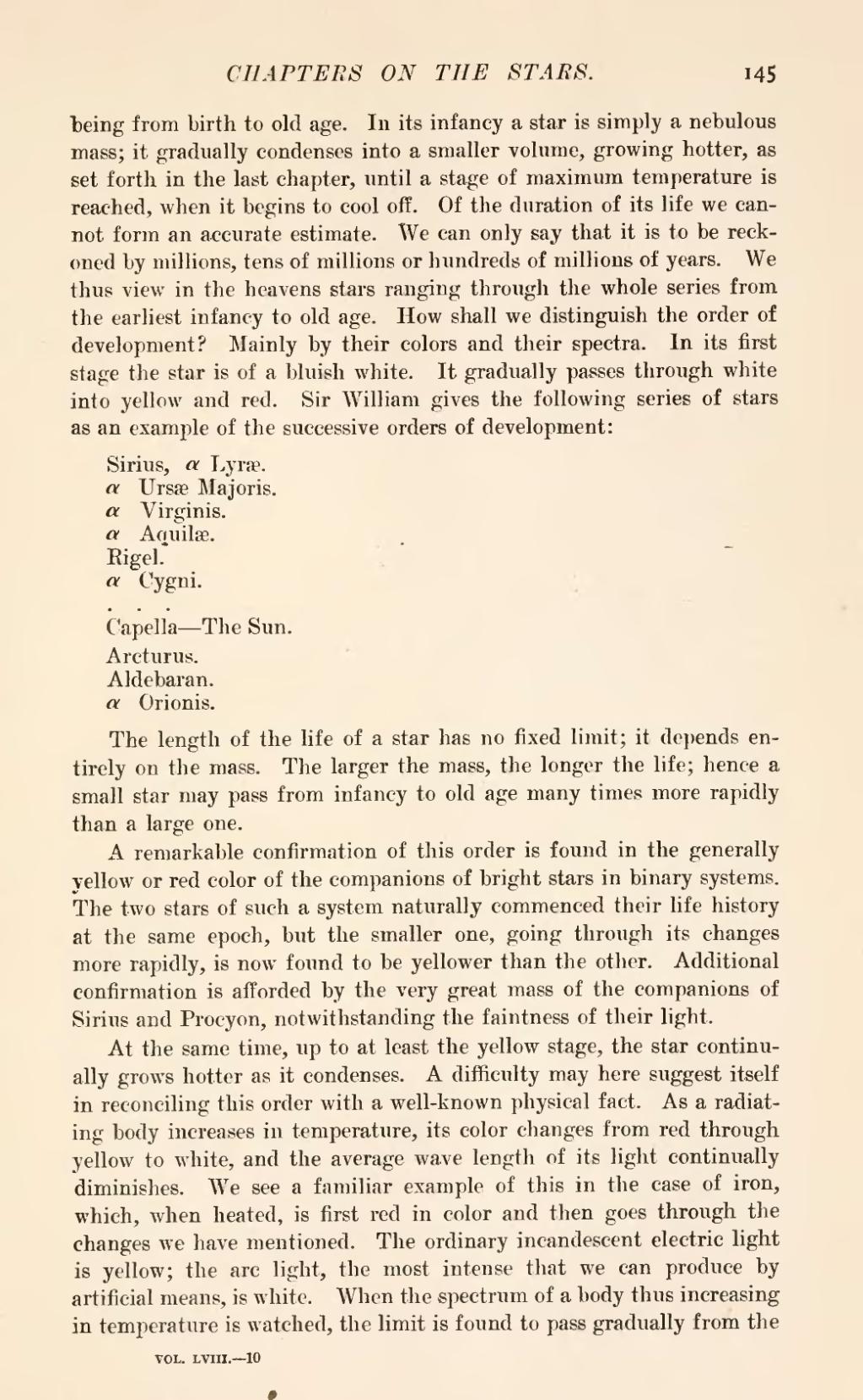being from birth to old age. In its infancy a star is simply a nebulous mass; it gradually condenses into a smaller volume, growing hotter, as set forth in the last chapter, until a stage of maximum temperature is reached, when it begins to cool off. Of the duration of its life we cannot form an accurate estimate. We can only say that it is to be reckoned by millions, tens of millions or hundreds of millions of years. We thus view in the heavens stars ranging through the whole series from the earliest infancy to old age. How shall we distinguish the order of development? Mainly by their colors and their spectra. In its first stage the star is of a bluish white. It gradually passes through white into yellow and red. Sir William gives the following series of stars as an example of the successive orders of development:
Sirius, α Lyræ.
α Ursae Majoris.
α Virginis.
α Aquilæ.
Rigel
α Cygni.
...
Capella—The Sun.
Arcturus.
Aldebaran.
α Orionis.
The length of the life of a star has no fixed limit; it depends entirely on the mass. The larger the mass, the longer the life; hence a small star may pass from infancy to old age many times more rapidly than a large one.
A remarkable confirmation of this order is found in the generally yellow or red color of the companions of bright stars in binary systems. The two stars of such a system naturally commenced their life history at the same epoch, but the smaller one, going through its changes more rapidly, is now found to be yellower than the other. Additional confirmation is afforded by the very great mass of the companions of Sirius and Procyon, notwithstanding the faintness of their light.
At the same time, up to at least the yellow stage, the star continually grows hotter as it condenses. A difficulty may here suggest itself in reconciling this order with a well-known physical fact. As a radiating body increases in temperature, its color changes from red through yellow to white, and the average wave length of its light continually diminishes. We see a familiar example of this in the case of iron, which, when heated, is first red in color and then goes through the changes we have mentioned. The ordinary incandescent electric light is yellow; the arc light, the most intense that we can produce by artificial means, is white. When the spectrum of a body thus increasing in temperature is watched, the limit is found to pass gradually from the
